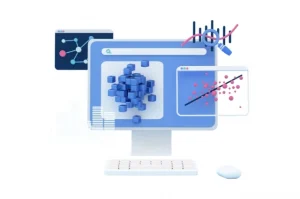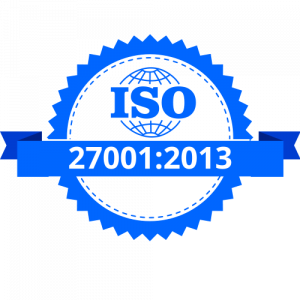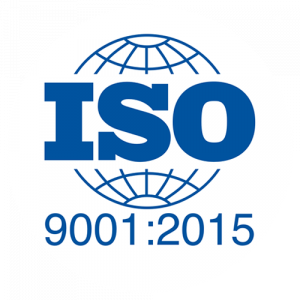
How IoT in E-Commerce is Driving Revenue Growth in 2025
The Internet of Things (IoT) has made a positive impact across various industries, and eCommerce is no exception. In 2025, integrating IoT into eCommerce businesses will reshape how businesses operate, interact with customers, and manage their supply chains. IoT creates a network that gathers, analyzes, and acts on data in real-time by connecting everyday objects, devices, and sensors to the internet. IoT will enhance operational efficiency, personalise customer experiences, and optimise supply chains. IoT helps eCommerce businesses drive revenue growth, streamline processes, and stay competitive in an increasingly digital marketplace. In this blog, we will learn how IoT in E-commerce is driving growth in 2025.
What is IoT?
The Internet of Things is a network of connected computing devices that communicate with one another via the Internet to transfer data without the need for direct human or human-to-computer contact. Sensor software provides real-time data and helps continuously monitor the information to the business, the Internet of Things assists in automating complex procedures.
The IoT in E-Commerce refers to the integration of devices and sensors connected within a single network to enhance various processes in the eCommerce sector. IoT transforms how businesses interact with their customers and manage back-end operations by delivering real-time data and enabling optimization.
Features of IoT in E-commerce
1. Smart Inventory Management

IoT-powered sensors can track inventory in real time, providing businesses with accurate data on stock levels, product movements, and demand fluctuations. Automated systems can trigger restocking orders or notify managers when stock is low. This ensures better inventory control, reduced stockouts, and more efficient supply chain operations.
2. Personalised Shopping Experience
IoT devices like smart wearables or apps can collect data about customer behaviour in physical stores or online platforms. This data can be used to send personalized recommendations or discounts based on individual preferences, location, or past purchase history, enhancing the customer experience and increasing conversion rates.
3. Predictive Analytics

By collecting and analyzing data from IoT devices, e-commerce businesses can predict trends, customer demands, and purchasing patterns. This predictive power enables businesses to plan promotions, optimize pricing strategies, and align production schedules, all of which contribute to better revenue generation.
4. Smart Product Displays
IoT can be used in brick-and-mortar stores through smart shelves and product displays. These smart shelves can alert store employees when an item is running low, automatically update digital signage with product promotions, and engage customers with interactive features like detailed product information or virtual try-on, which can increase sales.
5. Seamless Delivery and Tracking
IoT is transforming logistics by enabling real-time tracking of packages through GPS and RFID sensors. Customers can track their orders at every stage of delivery, reducing uncertainty and increasing satisfaction. Additionally, IoT-enabled vehicles can optimize delivery routes, reducing delivery times and costs.
6. Voice Commerce and Smart Devices
Integration of voice assistants into eCommerce platforms allows customers to place orders through voice commands. IoT-powered smart devices can enhance the shopping experience by enabling customers to order products simply by speaking, thus driving convenience and increasing sales.
7. Augmented Reality (AR) and IoT Integration
IoT can work with augmented reality to provide customers with interactive, immersive shopping experiences. For example, IoT-enabled devices can allow customers to visualize how products will look in their home environments before making a purchase, increasing the likelihood of conversion.
8. Automated Customer Service

IoT devices can automate customer service tasks by offering real-time solutions to customer inquiries through chatbots, virtual assistants, or AI-powered solutions. This reduces the need for human intervention, enhances operational efficiency, and improves response times, ultimately boosting customer satisfaction and loyalty.
Benefits of IoT in E-commerce to Drive Revenue Growth
1. Improved Customer Engagement
With real-time data collection, IoT allows businesses to personalize interactions, send targeted promotions, and provide customers with unique experiences based on their behaviour. This increases customer satisfaction, enhances brand loyalty, and drives repeat purchases.
2. Enhanced Operational Efficiency
IoT optimizes various aspects of eCommerce operations, including inventory management, order fulfilment, and logistics. Real-time tracking of shipments, products, and supply chains ensures smoother operations, fewer delays, and reduced costs, ultimately leading to better profit margins.
3. Data-Driven Decision Making
The continuous flow of data from IoT devices enables eCommerce businesses to make data-driven decisions. By analyzing customer preferences, behavior, and trends, companies can refine their marketing strategies, product offerings, and customer engagement tactics to align with demand, boosting sales and revenue.
4. Cost-Saving
With smart inventory management and automated replenishment systems, businesses can significantly reduce excess stock, storage costs, and stockouts.
5. Improved Product Quality and Customer Experience
IoT devices can provide real-time insights into product conditions during transit and in warehouses. This enables businesses to monitor temperature, humidity, and other environmental factors that could affect the quality of sensitive products (like food, electronics, or clothing).
6. Faster Delivery Times
IoT enables more efficient inventory and logistics management, meaning businesses can fulfil orders more quickly. Real-time tracking helps customers stay informed about delivery status, reducing delivery time uncertainty.
Conclusion
In 2025, the role of IoT in eCommerce will be important for business growth. If you integrate your business with IoT, it helps you to increase efficiency, smarter customer engagement, and enhance business growth. IoT not only offers the ability to optimize logistics and inventory but also enables a highly personalized and efficient customer experience.
Ready to integrate IoT into your E-commerce Business?
CRM Master’s Infotech provides Shopify e-commerce development services and helps you to integrate IoT to grow your eCommerce business.
With our Shopify experts, you can improve your store’s performance and increase sales.
Get in touch today to grow your Shopify store!












